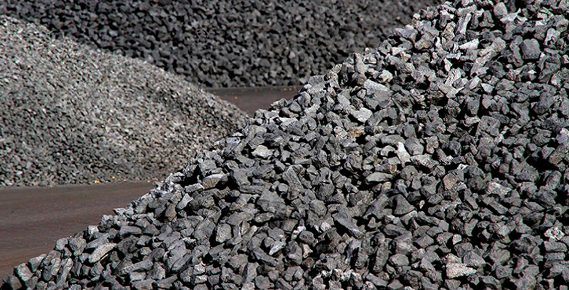
Calcining is a critical process in the production of high-quality calcined petroleum coke (CPC), a vital raw material used in various industries, including aluminum smelting, steel production, and titanium dioxide manufacturing. This article provides an overview of petroleum coke calcining technology, discussing the process, equipment, and advancements in the field.
The calcining process involves heating green petroleum coke (GPC) to high temperatures, typically between 1200°C and 1350°C, in a rotary kiln or a vertical shaft calciner. This process removes volatile matter, moisture, and impurities, resulting in a high-purity CPC with a fixed carbon content of over 98%. The calcination process also increases the coke's electrical conductivity, making it suitable for various applications.
Rotary kilns are horizontal, cylindrical furnaces that rotate slowly around their axis. Green petroleum coke is fed into one end of the kiln, while a burner at the other end provides the heat required for calcination. As the kiln rotates, the GPC moves through the furnace, undergoing a series of physical and chemical changes. Rotary kilns are widely used in the calcination of petroleum coke due to their versatility, high throughput, and ability to handle a wide range of feedstock sizes.
Vertical shaft calciners are tall, cylindrical furnaces with multiple hearths stacked vertically. Green petroleum coke is fed into the top of the calciner and moves downward through the hearths as it is calcined. The heat for the calcination process is supplied by burners located on the outer wall of the calciner. Vertical shaft calciners offer several advantages over rotary kilns, including higher energy efficiency, better temperature control, and the ability to produce CPC with more uniform properties.

Recent advancements in petroleum coke calcining technology have focused on improving energy efficiency, reducing emissions, and enhancing product quality. Some of these advancements include the use of preheaters to recover waste heat, the implementation of advanced process control systems, and the development of new refractory materials to extend the service life of calcining equipment. Additionally, research is being conducted on alternative calcination technologies, such as fluidized bed calciners, which offer the potential for further improvements in energy efficiency and product quality.
Petroleum coke calcining technology plays a crucial role in producing high-quality calcined petroleum coke for various industrial applications. Both rotary kilns and vertical shaft calciners are widely used in the calcination process, each offering unique advantages and challenges. Ongoing advancements in calcining technology aim to improve energy efficiency, reduce environmental impact, and enhance product quality, ensuring that calcined petroleum coke remains a valuable raw material for the metal production and manufacturing industries.

Write a Message